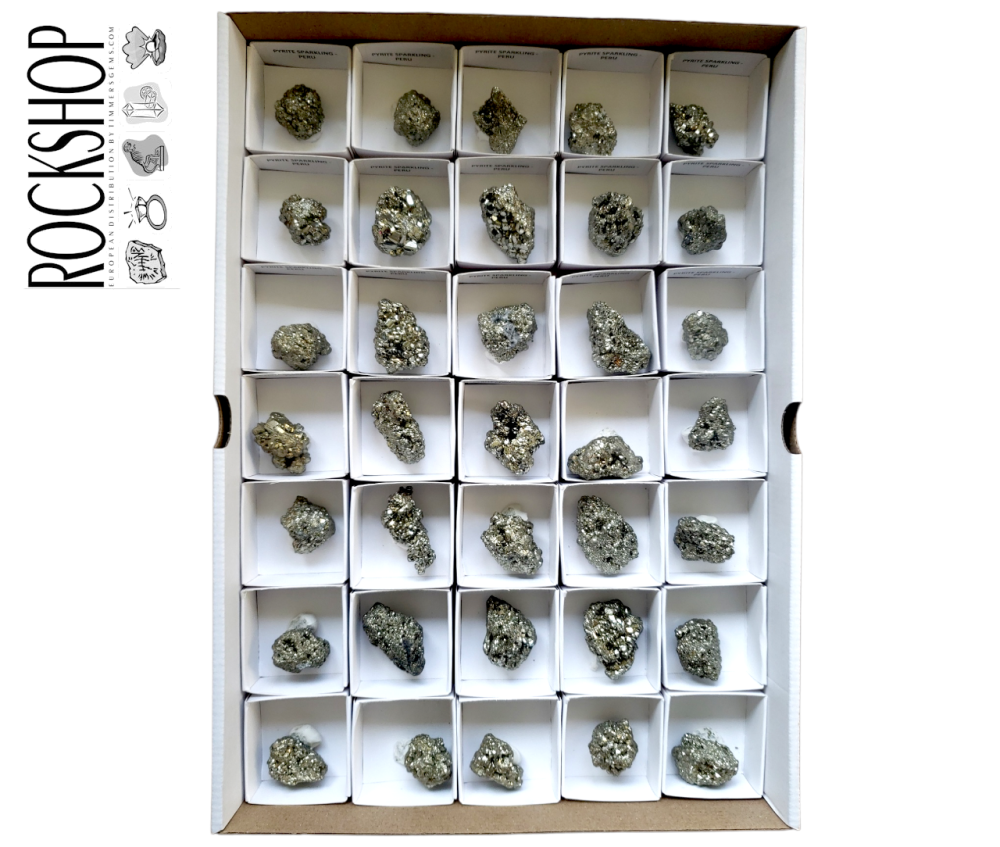We use cookies to make your experience better.
TimmersGems has a new website, existing customers also need to register again.
Rockshop box with 35 Pyrite groups from Peru.
Pyrite or iron clay is a mineral with the formula FeS2 (chemical name: iron disulphide). The mineral is an important iron and sulfur ore. It often forms well-formed (euhedral) crystals in the shape of a cube with characteristic striations and with a golden sheen. It is also called tinsel or fool's gold (from English fool's gold) because it was sometimes mistaken for gold. The name cat gold is also sometimes used incorrectly, but this refers to yellow mica or resin. Because pyrite occurs in abundance, it can create the illusion of great wealth. However, pyrite is not worth very much (although it can be sold). It is found together with other sulphurous minerals, but also with oxides, in quartz veins, in sedimentary rocks in carbon beds and as a replacement mineral in fossils. Pyrite is a disulphide with sulfur pairs (S2)2- and Fe2+ ions in an octadrical ring in a t2g6 low spin state. Due to the fact that both ions have a closed configuration, it is a diamagnetic semiconductor. The weathering of pyrite produces iron (hydr)oxides, which also releases sulfuric acid. This acid can then react with other minerals and thereby lead to the formation of, for example, gypsum, alunite and jarosite. An important site of pyrite is the island of Elba. The name pyrite is very old, derived from the old Indo-European word pyr (fire, cf. e.g. pyrotechnics for fireworks art, or the English pyre (pyre), because sparks could be made by striking pyrite against flint or iron. Today today we understand something completely different by flint (a certain form of SiO2). Other names that can be encountered for pyrite are ferrous sulfide, sulfuric iron and the less common words iron blende and iron mollusc. Pyrite used to be sold for fake gold because it has a golden shine However, the shine changes when the shine surface tilts, with gold the gold shine remains the same.Also, pyrite is angular, with sharp edges and hard, while gold is round and soft.
Availability:
In stock
SKU
120358
| Dimensions | Divers |
|---|---|
| Country of Manufacture | Peru |
Classic! The shine of gold, pyrite remains incredibly popular. Very beautiful Pyrite from Peru.












